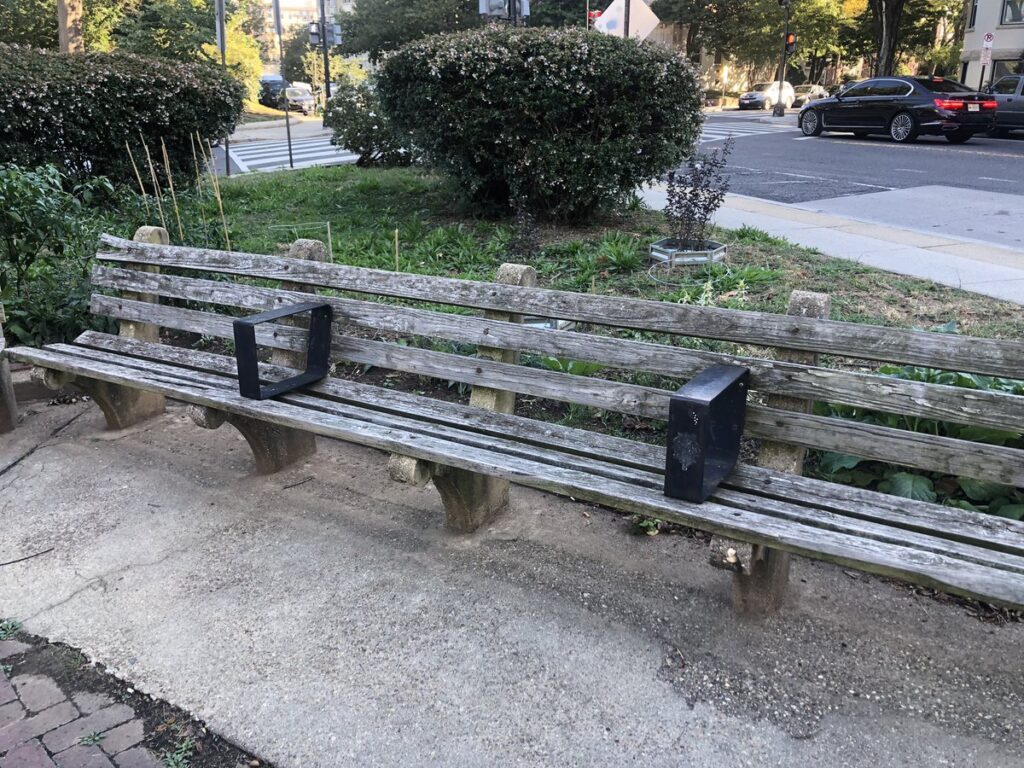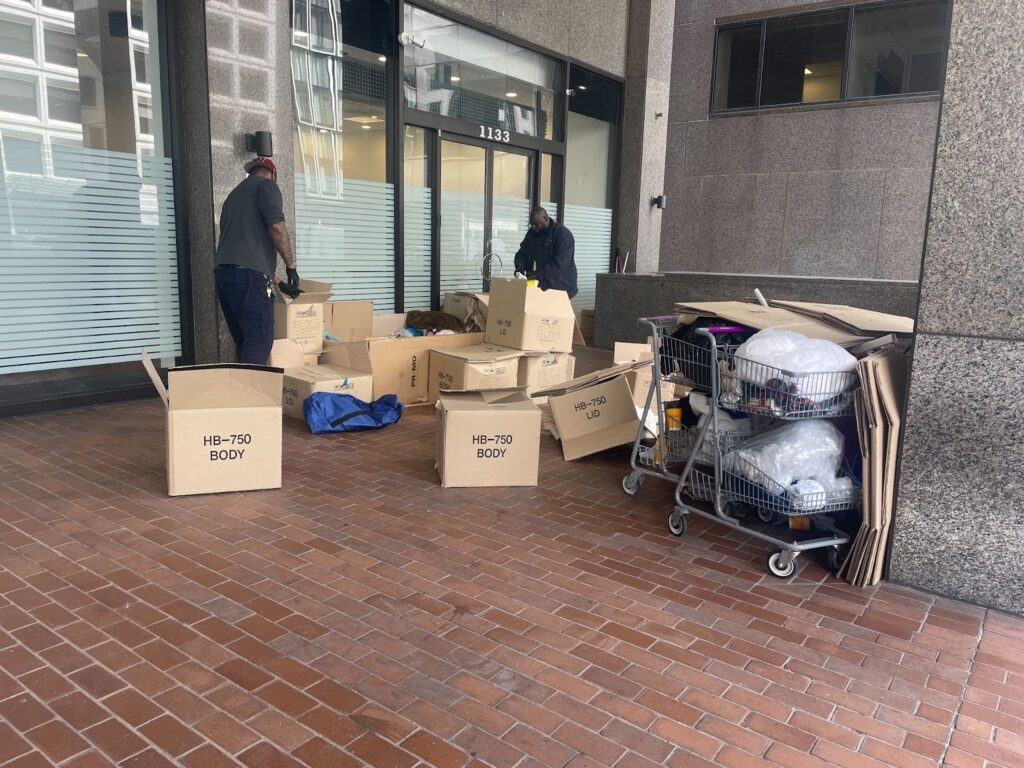Unhoused individuals are often forced to seek shelter in public spaces. However, a large percentage of public spaces are intentionally inaccessible to those who need them most. This is a phenomenon called “hostile architecture,” which the Cambridge Dictionary defines as “the design of public spaces in a way that stops unwanted behavior.” In practice, it is the means by which governments and businesses design public spaces to restrict unwanted behaviors by marginalized groups. In Washington, D.C., like many other cities, it seems the government and other organizations with jurisdiction over parks and public spaces are intentional about where they place hostile architecture, making it harder for people who sleep outside to find safe places to sleep.
Hostile architecture manifests in the form of altered public amenities. For example, benches in public spaces can have unneeded armrests in the center of the bench to prevent sleeping and prolonged usage. Adams Morgan Advisory Neighborhood Commissioner Peter Wood shared one example of this in Hargrove Park via X (formerly Twitter) in 2021. He called on the city to remove the middle armrest. (He tells Street Sense the city has since done so.) Governments can also install spikes or barriers to prevent people from lying down and dwelling in certain spaces, as seen in the case of the NoMa underpasses where people slept until D.C. cleared encampments in 2021. There’s even the removal of amenities —better known as “ghost amenities” — to discourage the use of a certain space, such as taking away benches from New York Avenue Presbyterian Church or water fountains at the Great Hall of Union Station.
The city’s difficult history with homelessness intertwines with long-standing racial and economic inequality. 88% of those unhoused in Washington, D.C. identify as Black, compared to 45% of the general population. In 2022, Mayor Muriel Bowser’s office announced that homelessness in D.C. had decreased by 47% since 2015, partially due to the reformation of shelters and homelessness prevention programs. The mayor’s goal to make homelessness “largely nonexistent” in D.C. by 2025 is commendable. However, in the past year alone, the number of people experiencing homelessness in D.C. has increased by nearly 12%.
While the D.C. government has had success in developing shelters and preventing homelessness, it has not done enough to improve the state of homelessness for unsheltered individuals. Individuals who are forced to live in public spaces are still subject to the exclusionary practices of hostile architecture. A Seattle study found that hostile architecture led to feelings of confinement and exclusion amongst unhoused elders. The spikes and other rigid designs can also inflict harm.
One of the best ways D.C. can improve its homelessness response is through legislation limiting the use of hostile design. Hostile architecture creates unnecessary barriers for people experiencing homelessness that push them away from city centers and support services, actively inhibiting the reach of the same homelessness response that the D.C. government spends millions on each year.
Legislation to ban hostile architecture isn’t a new concept. Last year, it was proposed in Connecticut’s state house. Banning hostile architecture in D.C. would do more than aid in our response to our neighbor’s housing security — it would remove a message to people experiencing homelessness that they are unwelcome.
Ganesh Bhojwani is a senior at School Without Walls High School. They have spent the past six months researching and speaking with experts about hostile architecture.








